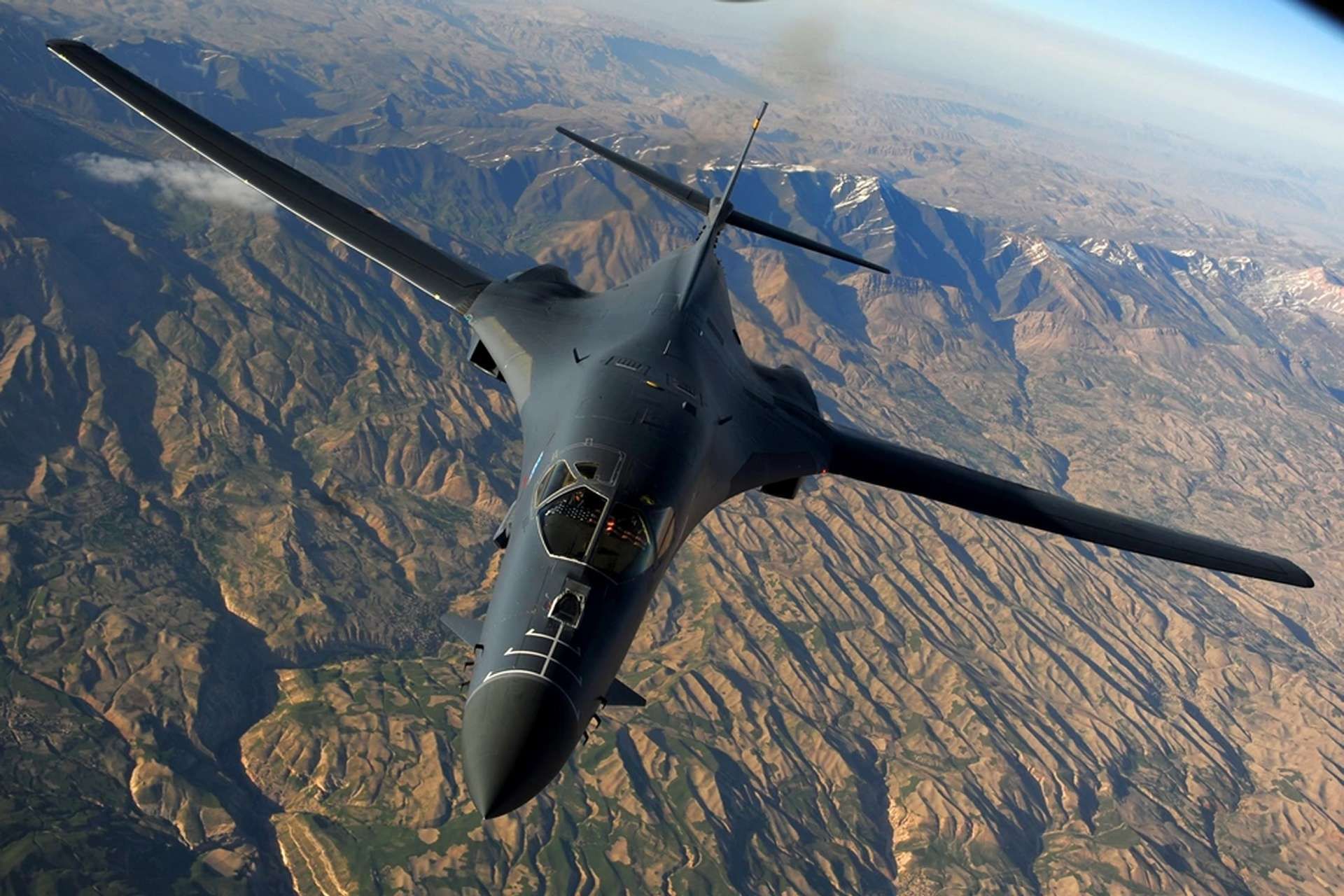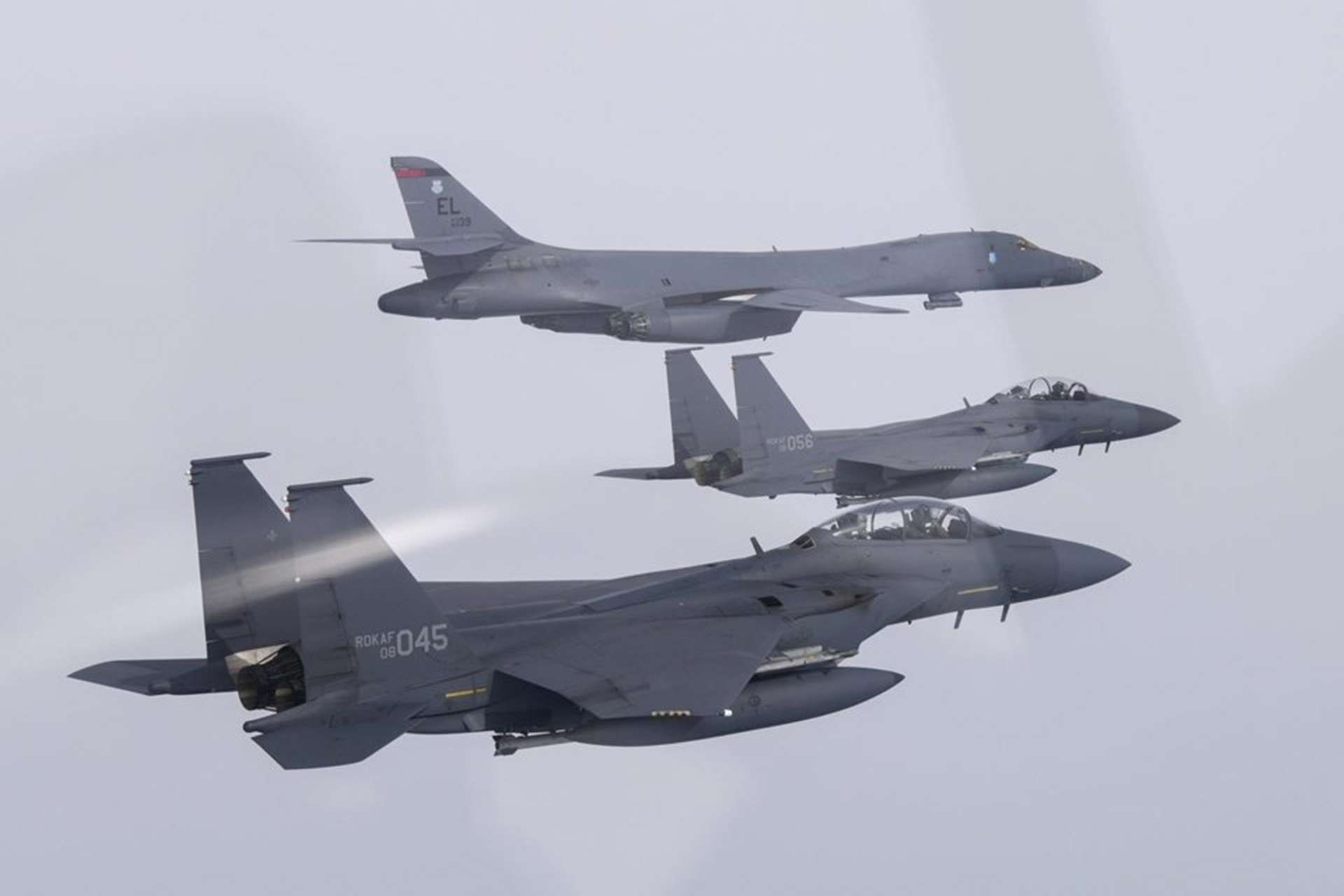Breaking news
US B-1B Bomber Conducts Joint Bombing Drills in South Korea.
During a military exercise on June 5, 2024, the United States deployed a B-1B bomber for joint bombing drills in South Korea, marking the first such deployment in seven years, according to the South Korean Defense Ministry. This operation comes amidst rising tensions due to North Korea's trash balloon campaign and GPS jamming incidents.
Follow Army Recognition on Google News at this link

The B-1B is a long-range, multi-role, heavy bomber primarily designed for strategic missions. (Picture source: US DoD)
During the exercise, the B-1B bomber dropped Joint Direct Attack Munitions (JDAM) on an undisclosed firing range in South Korea, while being escorted by Republic of Korea Air Force F-15K fighter jets, the ministry reported. This event marks the first exercise involving a B-1B bomber in the region since 2017.
The ministry emphasized that the exercise was conducted in close coordination between South Korea and the United States, focusing on demonstrating the U.S.'s extended deterrence commitment and strengthening the combined defense posture of the allies. Extended deterrence refers to America's promise to use all its military capabilities, including nuclear weapons, to defend its allies.
In addition to the B-1B bomber, South Korean F-15Ks participated in the live-fire drills, showcasing a robust combined defense stance against North Korea's nuclear and ballistic missile threats. The exercise also involved joint air maneuvers with South Korean F-35A and KF-16 fighters, as well as U.S. F-35B and F-16 jets. However, the exact number of B-1B bombers involved was not specified.
This exercise marks the second joint air drill of the year involving U.S. strategic bombers, reflecting the allies' continued show of force amidst rising tensions. Recently, North Korea has sent approximately 1,000 trash-carrying balloons into South Korea since May 28, leading Seoul to fully suspend a 2018 inter-Korean military pact on Tuesday.
Additionally, North Korea has engaged in several provocative acts, including jamming GPS signals near South Korea's northwestern border islands last week, launching short-range ballistic missiles into the East Sea on Thursday, and attempting a failed military spy satellite launch on May 27.
The B-1B is a long-range, multi-role, heavy bomber primarily designed for strategic missions. It was built by Boeing North America, formerly Rockwell International and North American Aircraft. The offensive avionics system is also provided by Boeing Military Airplane, while the defensive avionics are produced by EDO Corporation.
Powered by four General Electric F101-GE-102 turbofan engines with afterburner, each engine of the B-1B can generate more than 30,000 pounds of thrust. The bomber has a wingspan of 41.8 meters when the wings are extended forward, and 24.1 meters when swept aft. It measures 44.5 meters in length and 10.4 meters in height. Its empty weight is approximately 86,183 kilograms, while its maximum takeoff weight can reach 216,634 kilograms. The B-1B has a fuel capacity of 120,326 kilograms and can carry a payload of 34,019 kilograms.
Capable of flying at speeds of over 900 mph (Mach 1.2 at sea level), the B-1B has an intercontinental range and can reach an altitude of over 30,000 feet (9,144 meters). It is armed with various types of munitions, including up to 84 500-pound Mk-82 bombs or 24 2,000-pound Mk-84 bombs for general missions, as well as naval mines and cluster munitions. The bomber can also carry GPS-guided munitions and cruise missiles.
The B-1B crew consists of four people: an aircraft commander, a copilot, and two combat systems officers. Initially operational in October 1986, each B-1B unit costs approximately $317 million. Currently, the active force inventory includes 62 aircraft, with two designated for testing. The B-1B remains a key element of the U.S. strategic air power due to its capability to conduct various long-range bombing missions.

Images of a previous exercise between US and South Korean air forces. ( Picture Source: South Korean MoD)


























